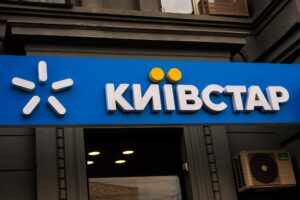
In October this year, Ukrainians purchased 3,114 thousand passenger cars imported from China, which is 2.6 times more than in the same month last year, according to UkrAvtoprom on its Telegram channel.
It is noted that most of the passenger cars purchased from China were new — 2,512 units, which is 2.6 times more than last year. Demand for used cars also increased more than 2.6 times — 602 units were imported.
The vast majority of passenger cars from China were electric vehicles – 92%.
The most popular models of new passenger cars of Chinese origin were Volkswagen ID.UNYX – 441 units; BYD Song Plus – 391 units; BYD Leopard 3 – 261 units; Zeekr 7X – 169 units; BYD Sea Lion 07 – 150 units.
The most frequently purchased used cars were Zeekr 001 – 57 units; BYD Sea Lion 07 – 45 units; Volkswagen ID.UNYX – 36 units; Zeekr 7X – 33 units; and Audi Q4 – 30 units.
As reported, in January-October of this year, China was among the top three countries from which Ukraine imported passenger cars after Germany and the United States, with a share of 13.8% of total imports or $663 million, while in the same period of 2024, it was not among the top three.
In 2024, Ukrainians purchased about 14,400 cars imported from China, which is 18% more than in 2023. Demand for new cars grew by 37% to 11,000 units, while demand for used cars fell by 20% to 3,300 units.
In addition, according to UkrAvtoprom, in October 2025, Ukrainians purchased more than 5,800 used cars imported from the United States, which is 2.2 times more than in the same period of 2024.
The largest share of this number (49%) was electric cars, while gasoline cars accounted for 36%, hybrids – 8%, diesel cars – 4%, and cars with LPG systems – 3%.
The average age of the used American cars that joined the Ukrainian car fleet in October was 5.2 years.
The five most popular used cars manufactured in the US were Tesla Model Y – 900 units; Tesla Model 3 – 841 units; Ford Escape – 408 units; Nissan Rogue – 273 units; Tesla Model S – 270 units.

Installation of individual and autonomous heating systems in residential projects can increase the cost of construction, but the demand for such an option on the part of buyers is gradually growing, said Ukrainian developers interviewed by Interfax-Ukraine.
“The issue of heating is one of the key for buyers – they study this aspect very carefully at the stage of initial consultations. Potential residents are interested not only in the technical characteristics of the system, but also in stability, autonomy and cost of operation,” the press service of Alliance Novobud reported.
As the developer noted, the format of heating is selected individually for each project, taking into account the location, technical capabilities, scale of the complex and the needs of future residents. Thus, Alliance Novobud projects provide for both their own boiler houses and centralized heating.
The feasibility of this or that format of heating is determined at the design stage. However, if necessary, it is possible to adjust technical solutions at the stage of implementation to optimize costs and improve efficiency without significantly affecting the overall cost of the project, explained in Alliance Novobud.
PGD installed generators in the previously designed complex already at the realization stage. In new projects, the developer is integrating autonomy into the concept and envisages its own boiler houses and solar power plants.
“It is fundamental for us that these issues are not left on the shoulders of the residents. We calculate and implement all solutions centrally, at the developer’s level. People want to be sure that the apartment will be warm, the elevator will work, the gates on the parking lot will open, and the access system will not stop due to power outages,” – said the press service of the developer.
According to PGD, this approach slightly increases the cost of project realization, but reduces the costs of operation in the future.
According to the construction group “Synergy”, the cost of heating from its own gas boiler house is about one third lower than from the centralized city system. In addition, the developer’s Irpen project is equipped with individual boilers in each apartment.
“The issue of heat in apartments is very relevant, there were many requests for individual heating, as well as for a warm floor. Independence from city repairs and seasonal hot water shutdowns, the official start of the heating season is important for residents”, – explained the developer.
An important component of the heating system is also its own generators, which ensure the operation of the boiler room and engineering systems of the house in case of shutdowns.
“People prefer autonomy and energy independence. That is why a generator, individual heating, energy efficiency of apartments, no unnecessary heat loss, uninterrupted water supply are real advantages. After the first blackout in the winter of 2022, these questions are more relevant than ever for sales visitors,” Greenville noted.
According to the experts of the company, the centralized heating system has a number of disadvantages, including high cost of connection, high level of wear and tear of networks, significant heat losses during transportation of energy carriers. Therefore, for its projects in Kiev, the developer has chosen the device of roof gas boilers and individual heating point.
Among the advantages in Greenville named technical flexibility of boiler rooms, environmental feasibility, cost-effectiveness and payback of the system. In addition, the high efficiency of individual boilers, automatic regulation and weather-dependent control optimize energy consumption.
“The payback period of an individual rooftop boiler plant is usually three to five years due to savings on tariffs and heat losses. Another advantage is technical flexibility. The system is easily adapted to different load modes (heating, hot water supply, summer period). And, finally, it is about environmental feasibility. Modern gas boilers have low emissions of nitrogen oxides and CO”, – explained in the company.
As noted by the executive director of the developer “Real” Igor Ferenc, roof boilers and individual boilers are also a necessary solution in the old districts of Lviv, which are not provided with centralized heat supply.
In Kiev, the choice of heating system for the project is dictated by a number of factors: location, available infrastructure and technical and economic feasibility, said the project manager of the capital’s business-class housing Maxima Residence Artem Sebba.
“We analyze the presence of nearby heat or gas networks, compare the cost of implementing different solutions and take into account the future costs of operation. In new projects we focus on solutions that allow us to reduce dependence on external suppliers and ensure more stable operation of the system”, – said the expert.
According to him, additional autonomous solutions in case of heat or power outages are considered for each project separately, because they affect the cost of construction and further operation.
The Enso development company, after a feasibility analysis, chose the centralized heat supply option for its projects. As explained in the company, the feasibility of the selected types of heating systems is determined by comparing the cost of connection, capital costs of construction and the projected costs of operation for residents
Adjustment of projects at the implementation stage may require additional resources and time, taking into account additional approvals and revision of project documentation, the developer noted. But the projects provide for the possibility of installing backup or alternative equipment.
“Such a decision did not affect the overall cost of project implementation, and the operating costs of residents remain at the level of market averages for residential complexes with centralized heating,” explained the developer.

Ukrainians in October this year purchased 3.114 thousand cars imported from China, which is 2.6 times more than in the same month last year, according to “UkrAutoprom” in the Telegram channel. It is noted that mostly purchased passenger cars from China were new – 2.512 thousand units, which is 2.6 times more than last year. Demand for used cars also increased more than 2.6 times – 602 units were imported.
The absolute majority of passenger cars from China were electric cars – 92%.
The most popular models of new cars of Chinese origin are Volkswagen ID.UNYX – 441 units; BYD Song Plus – 391 units; BYD Leopard 3 – 261 units; Zeekr 7X – 169 units; BYD Sea Lion 07 – 150 units.
The most frequently purchased used cars were Zeekr 001 – 57 units; BYD Sea Lion 07 – 45 units; Volkswagen ID.UNYX – 36 units; Zeekr 7X – 33 units and Audi Q4 – 30 units.
As reported, in January-October this year, China was among the top three countries from which Ukraine imported passenger cars after Germany and the U.S. with a share of 13.8% of total imports or $663 million, while for the same period in 2024 was not included in the top three.
For the whole year 2024 Ukrainians bought about 14.4 thousand imported autos from China – 18% more than in 2023. Demand for new cars increased by 37% – up to 11 thousand units, while demand for used cars decreased by 20% – to 3.3 thousand.
In addition, according to “UkrAvtoprom”, in October-2025 Ukrainians bought more than 5.8 thousand used cars imported from the U.S. – 2.2 times more than in the same period of 2024.
The largest share of this number (49%) – electric cars, while the share of gasoline cars was 36%, hybrid cars – 8%, diesel cars – 4%, cars with SBB – 3%.
The average age of “Americans” with mileage, added to the Ukrainian car fleet in October – 5.2 years.
The top five most popular used cars made in the USA are Tesla Model Y – 900 units; Tesla Model 3 – 841 units; Ford Escape – 408 units; Nissan Rogue – 273 units; Tesla Model S – 270 units.

The level of outages is now one of the highest since the summer of 2024, resulting in over 30% of the network of the largest mobile operator Kyivstar being without power, says the company’s CEO Alexander Komarov, advising fixed internet users to ensure they have backup power for their routers so that everyone can stay connected for longer.
“Today is a very difficult day. One of the most difficult since the summer of 2024. As of 9 a.m., more than 30% of the network is without power, almost evenly distributed across the country. Five regional technology centers are running on generators,” Komarov wrote on Facebook on Thursday morning.
According to him, for the most part, the network has been running on batteries and generators for most of the day. “Unfortunately, about 4% of sites have lost their functionality,” the CEO said.
He recalled that in preparation for prolonged blackouts, the company had reserved 99% of the Home Internet network for up to 12 hours of autonomous operation before the start of autumn, installing more than 80,000 modern LiFePO4 batteries and investing almost UAH 300 million in this in 2024-2025.
“This way, when there is no electricity, the fixed network remains operational. But in order to use the Internet for as long as possible, subscribers should do their part of the ‘backup’ — connect their routers to a backup power supply. A power bank, uninterruptible power supply (UPS), or charging station will suffice,” Komarov explained.
At the same time, according to his data, as of mid-November, only 15-20% of Home Internet subscribers had taken care of backup power for their routers, and during the recent total blackout in the Poltava region, the customer reserve was only 2%.
“And then everything is interconnected: users switch to mobile Internet, the load on base stations increases, their autonomous operation time is reduced, and the quality of mobile communication and data transfer speed deteriorate,” the head of the largest mobile operator described the current situation.
He called on customers to do their part to provide backup solutions for the network so that the country remains connected.
As noted, after the attack on November 8 and subsequent ones, Ukrenergo imposes restrictions on up to four queues every day, which in many regions means no electricity for more than 12 hours a day.
Kyivstar served 22.5 million mobile subscribers in the third quarter of 2025, which is 3.6% less than a year earlier, but the number of 4G customers grew by 2.4% to 15 million. In addition, it had more than 1.1 million Home Internet subscribers. In early September, Komarov announced that the company had over 16,000 telecom sites.

The head of the Verkhovna Rada Committee on Finance, Tax and Customs Policy, Danylo Getmantsev, has drawn the attention of the Economic Security Bureau (ESB) and the State Tax Service (STS) to the coffee trade sector, which has become one of the most problematic in terms of tax payments, with state losses reaching UAH 1 billion.
“We all love to start our morning with coffee. But what is a habit for us has long been a sector with significant losses for the state. The problems begin at the customs clearance stage: every third ton of coffee is smuggled in annually, disguised as chicory or without any declaration at all. The leaders in customs clearance are the Kyiv and Lviv customs offices,” he wrote on his Telegram channel.
According to him, the problems do not end at customs: markets and large retail chains, divided into individual entrepreneurs, are also involved in the schemes of selling illegal coffee for cash, with losses amounting to over a billion hryvnia.
The MP reported that in the first nine months of 2025, the industry showed disappointing results, namely: the VAT payment rate increased to 1.45% (+0.28 p.p. compared to 2024), but it is still 0.46 p.p. lower than in 2023, and income tax fell to 0.85% (-0.09 p.p. compared to 2024).
According to Getmantsev, the main risk for the sector is the level of wages, where 89% of taxpayers pay below the market average salary of UAH 12,900, while, according to work.ua, the market average is UAH 22,000. At the same time, more than 18% of enterprises have an average salary below the minimum, which is evidence of the use of tax evasion schemes.
“It is obvious that a significant part of the industry is in the shadows. The question to the tax authorities is: what is the matter with tax control, where are the cash registers/payment terminals?” said the head of the parliamentary committee, calling on the BEB and the DNS to take urgent measures to de-shadow the coffee industry.

On November 19–20, 2025, Kyiv became the center of discussion on the future of food security and technological development in the agricultural sector. In parallel with the AgroExpo 2025 exhibition, the IV International Conference “Food from Ukraine” was held, organized by the Ministry of Economy, Environmental Protection and Agriculture of Ukraine in conjunction with the Ministry of Foreign Affairs of Ukraine and the Federation of Employers of Ukraine, with the support of the European Bank for Reconstruction and Development (EBRD).
The large-scale exhibition and business forum brought together those who are shaping the future of the agricultural sector: from representatives of the EU, G7, African countries, and the Global South to Ukrainian government officials, leaders of industry associations, manufacturers of machinery and equipment, and companies in the domestic food industry. It was a space where international diplomacy, innovative business, and science came together in direct dialogue. The organizers set themselves an ambitious goal: to show the world that the Ukrainian agricultural sector, despite the challenges of war, remains a driver of innovation. That is why special attention was focused on demonstrating modern technologies in production and processing, new solutions in agricultural engineering, and promoting Ukrainian food products to global markets.
Education has become a critical element linking technology, business, and practical development in the agricultural sector. That is why, for the first time, the exhibition featured the capabilities of AgriAcademy, a free online platform for agricultural education and certified online courses from leading Ukrainian and international experts. AgriAcademy.org is a free online learning platform for agricultural workers and students of agricultural education institutions, launched by the EBRD in December 2022 as part of its food security support program in Ukraine. Its goal is to strengthen the competitiveness and sustainable development of agriculture, which has suffered significant losses due to the war.
AgriAcademy as a navigational beacon amid technology, innovation, and the challenges of war
Visitors to the exhibition could see AgriAcademy information banners with QR codes that led directly to the course catalog. This format attracted considerable attention—farmers actively tested the QR codes, photographed the banners, and many participants learned for the first time about the possibility of certified free training in Ukrainian.
The AgriAcademy team handed out flyers with direct links to certified courses, and this simplicity of interaction became an advantage: specialists from various companies were able to register on the spot without delay.
According to many participants, today, when the industry is experiencing a shortage of personnel and technologies are changing faster than businesses can adapt, quality education is no longer an option — it is a necessity for recovery and growth.
Why interest in AgriAcademy is growing
After the war began, thousands of agricultural workers lost access to structured forms of training. AgriAcademy has become the answer to this problem — a platform that provides:
You can register and take courses here: https://agriacademy.org/courses-catalog/
The training programs cover areas such as crop production, berry growing, horticulture, agronomy, irrigation, animal husbandry, crop processing, organic production, and sustainable development.
By the end of 2026, AgriAcademy plans to launch 20 new courses that meet current market demands.
“Grow with us — with AgriAcademy!”
This message, present at the exhibition, became a key reminder that the future of agribusiness is impossible without continuous learning.
The labor shortage, which is getting worse every year, requires investment not only in technology but also in people. Companies that work with modern knowledge are more efficient, productive, and competitive.
AgriAcademy – training that works for results
Go to training:
https://agriacademy.org/courses-catalog/
AgriAcademy is a free online training platform created on the initiative of the EBRD as part of its food security support program in Ukraine. Its goal is to strengthen the competitiveness and sustainable development of agriculture, which has suffered significant losses due to the war.
The platform’s creation and management (including course development, training tours, etc.) is supported and funded by the EBRD, as well as: